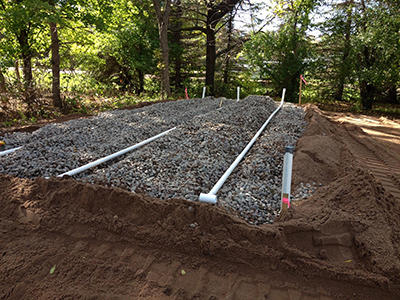
Of the 600,000 subsurface sewage treatment systems (SSTS) processing over 40 billion gallons of wastewater per year in Minnesota, estimates put 25% of these SSTS on or near shoreland. Final treatment of sewage occurs in the soil within the septic system drain field. Researchers are exploring the benefits of Biochar and iron-enhanced sand (IES) in boosting the effectiveness of soil filtration. Clean water relies on natural soil treatment of septic system effluent for nutrient and bacteria removal. PI Sara Heger (Water Resources Center, Onsite Sewage Treatment Program) is hopeful that this project will show that conventional soil-based septic system performance can be enhanced with the addition of biochar and/or IES. “Successful incorporation of Biochar and IES into soil treatment systems could be a game-changer for septic systems in fragile ecosystems like lakeshore properties,” said Heger. Continue to Water Resources Center website to read the full article.
Co-researchers and other partners:
Bo Hu, Department of Bioproducts and Biosystems Engineering U of M
Bridget Ulrich, NRRI
Stantec Engineering
MPCA Subsurface Sewage Treatment System